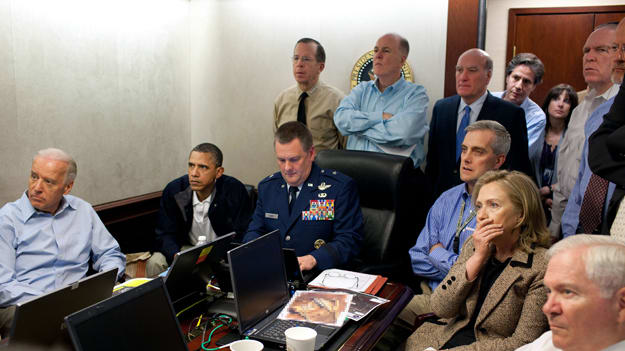Abraham Randolph Farran was born November 16, 1954 in Alcoa, TN to Kenneth Farran and Helen Farran. His father was a former US Army Air Corps bomber crewman who then worked as a forge operator for the Aluminum Company of America (now Alcoa, for which the town is named), and his mother was a secretary for Alcoa’s campus offices, though despite the lower middle class upbringing, the economic conditions in the Tennessee Valley ensured Abraham did not grow up with a TV set, but an ear for the radio and an eye for literature.
He attended the Alcoa School (now three separate schools), earning the equivalent of a secondary education before considering his career. With the war in Vietnam drawing to a close, and the military life being highly televised, Abraham made his desire to enlist clear, much to the disdain of his veteran father. To placate concerns, he agreed to instead seek a career by way of officer, being admitted to the Virginia Military Institute in 1972. He attended the school for two years with primarily academic honors before being nominated to the US Military Academy at West Point starting in 1974.
While at West Point, Abraham excelled in the academics field, especially in his chosen major of history, and his chosen minor of national security studies. During his training, he excelled in his field maneuver training his second year, and went on to be permitted to attend the US Army Air Assault School at Fort Campbell, KY his third summer, and the US Army Airborne School at Fort Benning, GA his fourth and final summer, receiving both his air assault wings and jump wings and earning himself a position as an officer within the 101st Airborne on graduation. He graduated with honors part of the class of 1978.
Becoming an infantry platoon leader in 2nd Battalion, 502nd Parachute Infantry Regiment, he served in multiple training maneuvers with NATO and UN allies, primarily in Egypt and Germany, throughout the entirety of the 80s without incident. Promoted to first lieutenant, then captain, and on the cusp of major, he had just past his first decade of service. However, the Gulf War began just before his orders went through. He led his company as part of the 2,000 man element of the 101st Airborne which crossed into Kuwait in January 1991 to cut off the Iraqi supply lines by way of Highway 80 and the connected Highway 8, the six-lane route which would become known as the Highway of Death due to 2,000-2,500 vehicles of enemy origin being surrendered or destroyed in the 100 hours that the operation lasted.
Abraham received his promotion at the conclusion of the operation, and would remain as executive officer of 2nd Battalion, 502nd PIR as the 101st remained within the Iraqi sphere. Soon redeployed, Abraham would have a hand in planning and supplying humanitarian and peacekeeping missions in Somalia, Rwanda, Bosnia, and Haiti throughout the rest of the 90s. He made Lieutenant Colonel in 1995, receiving command of the entire 2nd Battalion, 502nd PIR.
Deployed to Kosovo with other units of the 101st, he helped maintain the sovereignty and stability of an independent Kosovo whilst they underwent their first election cycle in 2000. He was commended for his efforts as the unit withdrew back to the United States. A year later, on September 11th, 2001, the World Trade Center in New York City was attacked, filling Abraham with disgust as he and his unit were put on standby. As the Colonel above him was moved up an echelon to become brigade commander, he received a surprising promotion to Colonel, given the entire 502nd PIR.
The 101st, including his 502nd PIR, would be one of the first non-SF US units to cross into Afghanistan as part of ISAF. Participating in initial establishment of FOBs, they were the springboard into Operation Anaconda, shattering the open hold on the region by the Taliban. The entire 101st was retasked in early 2003 to Kuwait, before being part of the tip of the spear into Iraq, going directly for Baghdad. Surrounding Najaf along with elements of the 3rd Infantry Division and 1st Armored Division, with support from RAF strike craft, the 502nd formed an infantry screen to guard the “Thunder Run” (a large armored push) of the 1st Armored’s 70th Armored Rgt. which eventually caused the city to fall, with other assets of the 101st blocking the escape along the highway to Baghdad.
Airmobile assets of the 101st, including a company of the 502nd PIR, pushed into Baghdad as the 3rd Infantry Division, 1st Marine Division, and 1st Armored Division all executed the largest “Thunder Run” of the war, in which Baghdad fell in only nine days, finally being cleared on April 12, 2003. As Major General David Petraeus was promoted the following year, and the Brigadier General billet above him was open, he was briefly promoted to command the entire 2nd Brigade, 101st Airborne before the unit rotated in for an extended stay in the US. He made Major General the following year and was transferred to the staff of the Garrison Command, Fort Bragg, NC, becoming commander of the Directorate of Plans, Training, Mobilization, and Security of Fort Bragg, where, despite his disdain for a non-combat position, he excelled at management.
In 2007, he became Deputy Commander, XVIII Airborne Corps, remaining at Fort Bragg, before eventually replacing the retiring Lt. Gen. John R. Vines as Commander, XVIII Airborne Corps. He remained in the position until 2012, when he retired and was eventually hired by General Dynamics in an advisory position for an undisclosed six-figure salary, where he worked until 2021, when, in light of his recent combat experience, extensive national security knowledge, and connections with companies in the military industrial complex, he was offered the position of Secretary of Defense under AJ Shepard’s administration.



